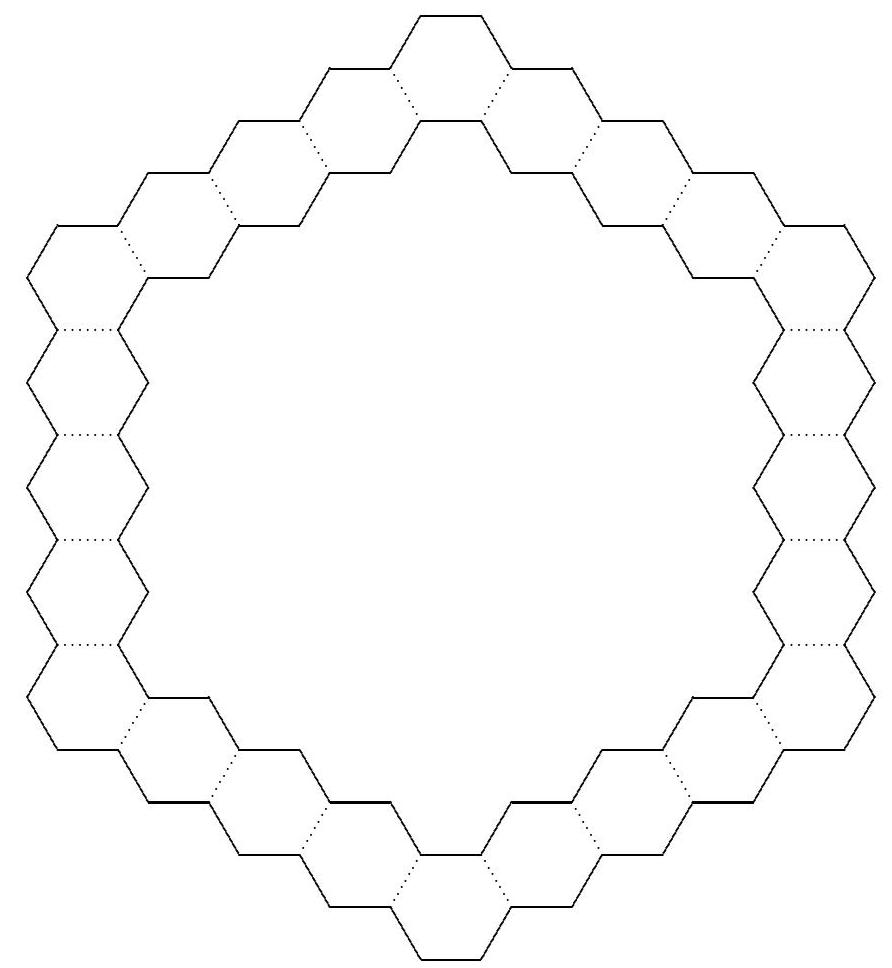¶ 2002 AIME II Problems and Solutions
Problem Set Workbook
Access the downloadable workbook for 2002 AIME II problems here.
Discussion Forum
Engage in discussion about the 2002 AIME II math contest by visiting Random Math AIME II 2002 Forum
Individual Problems and Solutions
For problems and detailed solutions to each of the 2002 AIME II problems, please refer below:
Problem 1: Given that
and are both integers between and , inclusive;
is the number formed by reversing the digits of ; and
.
How many distinct values of are possible?
Solution:
Problem 2: Three of the vertices of a cube are , and . What is the surface area of the cube?
Solution:
Problem 3: It is given that , where , and are positive integers that form an increasing geometric sequence and is the square of an integer. Find .
Solution:
Problem 4: Patio blocks that are regular hexagons unit on a side are used to outline a garden by placing the blocks edge to edge with on each side. The diagram indicates the path of blocks around the garden when .

If , then the area of the garden enclosed by the path, not including the path itself, is square units, where is a positive integer. Find the remainder when is divided by .
Solution:
Problem 5: Find the sum of all positive integers , where and are non-negative integers, for which is not a divisor of .
Solution:
Problem 6: Find the integer that is closest to .
Solution:
Problem 7: It is known that, for all positive integers ,
Find the smallest positive integer such that is a multiple of .
Solution:
Problem 8: Find the least positive integer for which the equation has no integer solutions for . (The notation means the greatest integer less than or equal to .)
Solution:
Problem 9: Let be the set . Let be the number of sets of two non-empty disjoint subsets of . (Disjoint sets are defined as sets that have no common elements.) Find the remainder obtained when is divided by .
Solution:
Problem 10: While finding the sine of a certain angle, an absent-minded professor failed to notice that his calculator was not in the correct angular mode. He was lucky to get the right answer. The two least positive real values of for which the sine of degrees is the same as the sine of radians are and , where , and are positive integers. Find .
Solution:
Problem 11: Two distinct, real, infinite geometric series each have a sum of and have the same second term. The third term of one of the series is , and the second term of both series can be written in the form , where , and are positive integers and is not divisible by the square of any prime. Find .
Solution:
Problem 12: A basketball player has a constant probability of of making any given shot, independent of previous shots. Let be the ratio of shots made to shots attempted after shots. The probability that and for all such that is given to be , where , and are primes, and , , and are positive integers. Find .
Solution:
Problem 13: In triangle , point is on with and , point is on with and , and and intersect at . Points and lie on so that is parallel to and is parallel to . It is given that the ratio of the area of triangle to the area of triangle is , where and are relatively prime positive integers. Find .
Solution:
Problem 14: The perimeter of triangle is , and angle is a right angle. A circle of radius with center on is drawn so that it is tangent to and . Given that , where and are relatively prime positive integers, find .
Solution:
Problem 15: Circles and intersect at two points, one of which is , and the product of their radii is . The -axis and the line , where , are tangent to both circles. It is given that can be written in the form , where , and are positive integers, is not divisible by the square of any prime, and and are relatively prime. Find .
Solution:
The problems on this page are the property of the MAA's American Mathematics Competitions